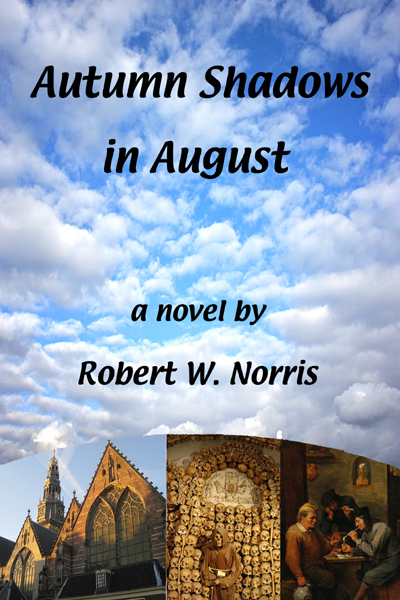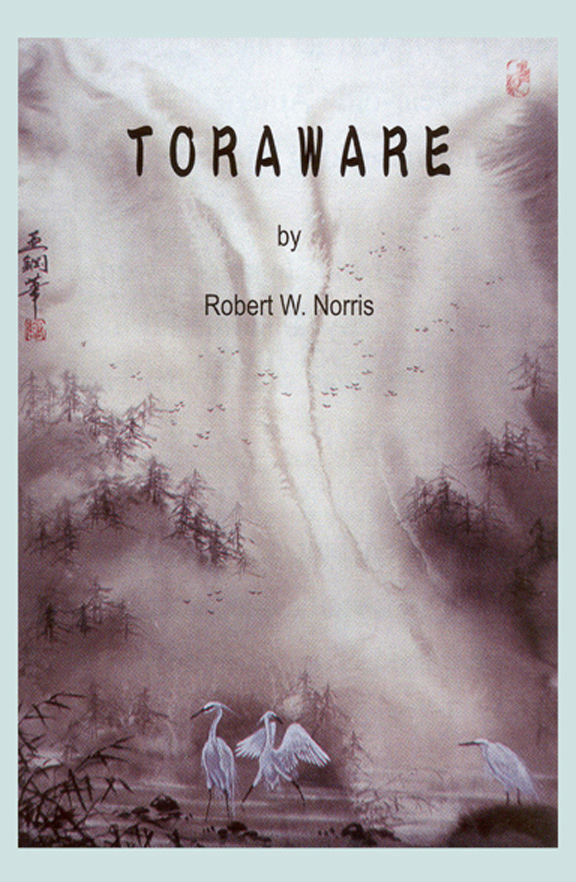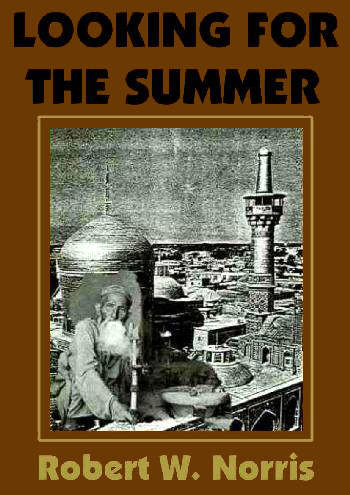
Home About Robert CV The Good Lord Willing and the Creek Don't Rise: Pentimento Memories of Mom and Me Novels Reviews ESL Papers (can be viewed online by clicking on titles) The Many Roads to Japan (free online version for ESL/EFL teachers and students) Contact     |
Robert W. Norris 2003. Bulletin of Fukuoka
International University, No. 10 Abstract Based on the earlier proposed model (Norris, 2003: 39-50) for introducing "if" conditionals to ESL/EFL students, this paper presents a variety of lesson plans for teaching these troublesome forms. Keywords: conditionals, if sentences, backshifting, ESL, EFL, grammar
Introduction In an earlier paper (Norris, 2003) I examined relevant research on the difficulties inherent in the teaching and learning of conditionals, then proposed a simple model (see Appendix) that goes beyond the traditional way of introducing and practicing these troublesome forms. The sections on relevant research included the main difficulties related to the many types of conditionals; their frequency, number, and usage; their grammatical structures; and some areas of controversy. The proposal section outlined a means of simplifying and combining conditional categories by focusing on (a) time-tense relationships and backshifting and (b) the relationship of "hope" and "wish" sentences to "if" conditionals. This second paper presents a variety of detailed lessons based on the ideas outlined in the previous paper and designed (a) to facilitate Japanese university students' consciousness-raising and noticing of English "if" conditional patterns and (b) to encourage the students' active production of "if" conditionals with minimal preparation and maximum personal involvement. This paper is divided into two parts. The first part introduces the patterns outlined in the proposed model, sample sentences, and initial production exercises centered on "hope" and "wish" sentences with corresponding "if" sentences explaining the reasons for the "hope" and "wish" sentences. The second part has extended production activities that guide students to produce the target patterns, as well as raising their consciousness of the patterns. Introductory Exercises Hopes and Type 1 If Sentences Put the following
patterns and sample sentences on the board. I hope + subject + present tense + (future word) Explain that hopes and the "type 1 if" sentence pattern almost always refer to future possibilities. Explain the "one step back" rule concerning using a present tense verb in the "hope" sentence and "if" clause in the "if" sentence. Point out that the pattern is the same in the "hope" sentence and in the "if" clause in the "if" sentence. Explain that the choice of auxiliary in the result clause refers to either the strength of the possibility or the ability to do or be something. Emphasize the importance of including a future time word or expression at the end of each sentence or clause. The purpose is to raise the students' consciousness about the backshifting of tenses in these sentences. As they become used to recognizing and producing conditional sentences, this requirement can eventually be eliminated if the time element is known to both speakers and listeners (or writers and readers). Have each of the students make a list of 5-10 future hopes, as well as possible results if the hopes come true. Explain the "if" sentences describe the reasons for the hopes. While the students are writing their sentences, walk around giving help where needed and making sure the students are following the patterns. Present Wishes and Type 2 If Sentences Put the following
patterns and sample sentences on the board. I wish + subject + past tense + (now) Explain that present wishes and the "type 2 if" sentence pattern almost always refer to present unrealities. Explain the "one step back" rule concerning using a past tense verb in the "wish" sentence and the "if" clause in the "if" sentence. Point out that the pattern is the same in the "wish" sentence and in the "if" clause in the "if" sentence. Explain that the auxiliary chosen for the result clause refers to either the strength of the unreal possibility or the unreal ability to do or be something, and that "would" and "could" are the past forms of "will" and "can." Emphasize the importance of including the time word "now" at the end of each sentence or clause. The purpose is to raise the students' consciousness about the backshifting of tenses in these sentences and that although these patterns refer to the present moment, they take the past form. Have each of the students make a list of 5-10 present wishes, as well as results if the wishes really came true. Explain the "if" sentences describe the reasons for the wishes. While the students are writing their sentences, walk around giving help where needed and making sure the students are following the patterns. This pattern
often causes initial confusion due to both the aspect of
unreality and the backshifting of tenses. It can be very
helpful to first have the students make a list of 5-10
present facts about which they are dissatisfied and the
reasons for the dissatisfaction. For example: "I'm too
short, so I can't play basketball." "I don't have any
money, so I can't buy a car." and "I live far from
school, so I have to get up early." The process of
taking present facts and dissatisfaction and turning
them into sentences expressing unreality can be
demonstrated on the board as follows.
The students can
then produce their "wish" and "if" sentences by
following the patterns written on the board. For
example: "I wish I was tall (now). If I was tall (now), I could play basketball (now)."Past Wishes and Type 3 If Sentences Put the following
patterns and sample sentences on the board. 1a. I wish + subject + past perfect tense (had + p.p.) + (past word). Explain that past
wishes and the "type 3 if" sentence patterns usually
refer to past unrealities. Explain the "one step back"
rule concerning using a past perfect tense verb in the
"wish" sentence and the "if" clause in the "if"
sentence. Point out that the pattern is the same in the
"wish" sentence and the "if" clause in the "if"
sentence. Explain the importance of differentiating
between present and past results. If there is a present
result of the past action (e.g., "I have a headache
[now]"), the pattern for the result clause is the same
as that for the "type 2 if" result clause. If there is a
past result of the past action (e.g., "I didn't pass the
test [last week]"), the new pattern must be followed
(i.e., subject + would/could + have + p.p. [past word]).
This differentiation between present and past results of
a past action inevitably causes confusion in the
beginning. Again, it is helpful to demonstrate on the
board the process by which past actions with present or
past results are turned into sentences expressing past
and present unreality.
"I wish I hadn't drunk (last night). Type 4 If Sentences Put the following
patterns and sample sentences on the board. 1. If + subject + verb/modal, subject + same verb tense/modal Explain that while "hope" and "type 1 if" sentences deal with future possibilities, and "wish" and "types 2 and 3 if" sentences deal with present and past unreality, "type 4 if" sentences deal with facts, habits, customs, and routines. Explain that "when" or "whenever" can replace "if" in these sentences. The nuance of "always," "usually," "never," etc. is very strong. Have the students list up their own present and past routines and habits, then follow the pattern in making their own "type 4 if" sentences. Type 5 If Sentences Students can be
told to use this category to include all "if" patterns
they come across that don't fall into the other four
categories. They are not asked to produce any sample
sentences at this stage. They need only be aware that
there are other types of patterns that exist. Production Exercises Interview Dictation Race The teacher must first organize the classroom so there is a lot of space in the middle. For example, in a class of 24 students the desks and chairs can be arranged in eight groups of three in a U-shape against three walls. Eight chairs are placed in a straight line at the front so that all teams are approximately equidistant from their assigned chairs at the front. Each group has one reporter, one interviewee, and one writer. The interviewee from each group sits in the group's chair at the front. The writer sits at the group's home base. The teacher gives the signal to start. The reporters go to the interviewee and ask "Whatェfs your hope and why?" The interviewee answers. The reporter remembers the answer and races back to the home base to dictate the answer to the writer. After five hopes and reasons have been completed, members change roles. The process continues until five more answers are completed. Members change roles again. The first group to complete all 15 sets of hopes and "if" reasons is declared the winner. Members can double-check their sentences to see if they have followed the patterns correctly. This activity can be used for present and past wishes and their corresponding "if" sentences, as well as for reviewing almost any pattern. I Would Like to be a ____ .1 You need a set of
25-30 cards or pictures of different animals for each
group of three to five students. The teacher first
reviews the ェgtype 2 ifェh pattern (If + subject + past
tense, subject + would/could + verb). Next, the teacher
puts this cued dialogue on the board: A: "I'd like to be a ___." The class is
divided into groups of five. The animal cards are again
placed face down in the middle of each group. Student 1
picks a card and shows it to the others. Student 1
becomes A and the student to her right becomes B. The
other three students are C, D, and E. Following the cued
dialogue on the board, A and B must explain why they
would or would not like to be the animal on the card.
The other members of the group decide which of the two
gave the best reason. The winner keeps the card. The
following conversation is an example. A: "I'd like to be a lion." After the winner is decided, the students rotate roles. Student B becomes A, C becomes B, and so on. Another card is turned up and the game proceeds as before. When all the cards have been turned up, the student with the most cards is declared the overall winner. The students should be encouraged to use the second conditional when explaining their reasons. A time limit can also be used to speed up the game. For example, if the students cannot think of a reason within one minute, they automatically lose. My Name Is2 Put the students
in groups of 6-8 people. Have them play janken
(paper, scissors, stone) to decide the order they have
to speak in. Review the target "hope" sentence pattern
and the corresponding "if" pattern. Put the following on
the board: My name is _____. I hope _______. If ___________, __________. Explain that after the first person completes the first sentence, the next student starts by reporting what the first person said, then tells his own name and hopes. Each student continues reporting on what the other students said until the final student reports what all the students said. The team to finish the fastest is declared the winner. Other patterns can be added. At the end, one student from each group comes to the front of the class and introduces the other members of the group and reports their names, hopes, and "if" sentences. This activity can also be used for present and past wishes and their corresponding "if" sentences, as well as for reviewing almost any pattern. Future Accidents The teacher puts
the following pattern on the board: If + subject (relative clause) + present tense verb, subject + will/won't/can/can't/might/might not + verb The teacher hands
out copies of a picture that contains several accidents
about to happen. Explain that the students must pick 3-4
situations and write a sentence using the above pattern
about each of the situations. For example: 1. If the girl who is walking on the sidewalk steps on the banana, she will fall down. The students can
work individually or in small groups. Have them use
their imaginations and make a story (following the
pattern) about each situation. A minimum of three or
four sentences for each situation should be used. After
the first sentence, it is not necessary to use relative
clause subjects. They must take the result clause from
the previous sentence and convert it to the "if" clause
of the next sentence. An example for number 1 above
would be: 1a. If the girl who is walking on the sidewalk steps on the banana, she will fall down.
Snakes and Ladders3 For this game you
need some dice, markers (coins, pins, erasers, etc.),
and copies of a "Snakes and Ladders" game board. I use a
B-4 size piece of paper with anywhere from 35 to 70
squares. Half the squares are empty and half have
sentences with "hope," "wish," and "if" sentences in
them. About half of the sentences should have mistakes
in them. These mistaken sentences can either be made up
or taken from the students' homework. The board should
have some snakes and ladders drawn on it where the snake
heads and ladder tops are in a square with a higher
number and snake tails and ladder bottoms in a square
with a lower number. Divide the class into groups of 4-5
students and give each group a copy of the game board
and a die. Write on the blackboard some sentences the
students can use while playing the game and interacting.
For example: "I think this sentence is correct." Everyone places their markers in the first square. Have the students decide the order in which they play. Explain that the first player to reach the end is the winner. Demonstrate how to play the game. Mario Rinvolucri (1984: 28-29) suggests the following rules: b. The winner is the first person whose score takes him or her to or beyond the finish line. c. If a player lands on a sentence that has already been discussed, he or she automatically goes on to the next unworked-on sentence. d. If one of the players feels that the others are wrong about a grammar point, he or she should note down the number of its square and ask the teacher at the end of the game. What Would You Have Done? Prepare some dilemma stories such as the following two about someone who had to make an important decision. Jane's best friend started working at the same electronics shop she worked at. One day the best friend stole a camera from the shop. No one saw Janeェfs friend take the camera. One day Jane visited her friend's house and noticed the stolen camera was on a table. If you had been Jane, what would you have done? Why? A: If I had been John, I would have kept the money too. Game Show This game is best used as a review activity after completing more than one of the units in the introductory exercises section of this paper. Teams of 3-4 students are created with each team choosing one captain. Team members can discuss possible answers, but only the captains can answer for their teams. The team that answers fastest with a correct answer gets a point More points can be awarded depending on the difficulty of the pattern being elicited. The teacher
starts by saying "Give me a future hope sentence." The
captains' answers must follow the pattern referred to.
Other patterns can include: 1. Future "if" These patterns can be made more difficult (and worth more points) by requiring that the subject of the various sentences or clauses be singular, plural, or relative clauses. Conclusion The teacher should take into consideration student levels when deciding whether to introduce the entire model at once or portions of it separately. Given the limited number of times students and teachers meet in a university school year, there should be no expectation that students will be able to become fluent in the production of the many types of English "if" conditionals. The aim should be directed at exposing the students to more than the traditional three types (see Celce-Murcia and Larsen-Freeman, 1999:545), and equipping them with some basic communicative control over the patterns, as well as the confidence to become more proficient in the future. To this end, Celce-Murcia and Larsen-Freeman (1999) say that acquisition of the English tense-aspect system, the modal auxiliaries, and negation is a prerequisite for ESL/EFL students to acquire the full range of English conditionals. When introducing the activities outlined in this paper, it is vital for the teacher to create a classroom atmosphere in which students feel comfortable and uninhibited. In addition to the importance of classroom atmosphere, Littlewood (1992) suggests three more conditions for optimum learning: (1) learning must be relevant to the students' interests and needs [talking about "hopes" and "wishes" seems to fulfill this requirement in most cases], (2) processes as well as production are important, and (3) students must perform active roles. The activities described in this paper are meant to provide illustrations of activity types and how they can be carried out, rather than to be prescriptive lesson plans. I hope the material included here and in the previous paper (Norris, 2003) will be of help to teachers dealing with the problems inherent in the teaching and learning of English "if" conditionals. Any comments, suggestions, or criticism from readers will be welcome and greatly appreciated. NOTES 1. The idea for "I Would Like to be a ___" comes from Tom and McKay (1991: 63). 2. Adapted from Maley and Duff, 1978: 70. 3. Adapted from Rinvolucri, 1984: 28-32. APPENDIX Table 3: Proposed Model for Introducing "If" Sentences
Celce-Murcia, M. and D. Larsen-Freeman. 1999. The Grammar Book: An ESL/EFL Teacher's Course (2nd Edition). New York: Heinle and Heinle. Littlewood, W. 1992. Teaching Oral Communication: A Methodological Framework. Oxford: Blackwell Publishers. Maley, A. and A. Duff. 1978. Drama Techniques in Language Learning. Cambridge: Cambridge University Press. Norris, R. W. 2003. "How Do We Overcome the Difficulties of Teaching Conditionals?" Bulletin of Fukuoka International University, No. 9: 39-50 Rinvolucri, M. 1984. Grammar Games. Cambridge: Cambridge University Press. Tom, A. &
McKay, H. 1991. The Card Book: Interactive Games and
Activities for Language Learners. Englewood
Cliffs, New Jersey: Prentice-Hall, Inc. |